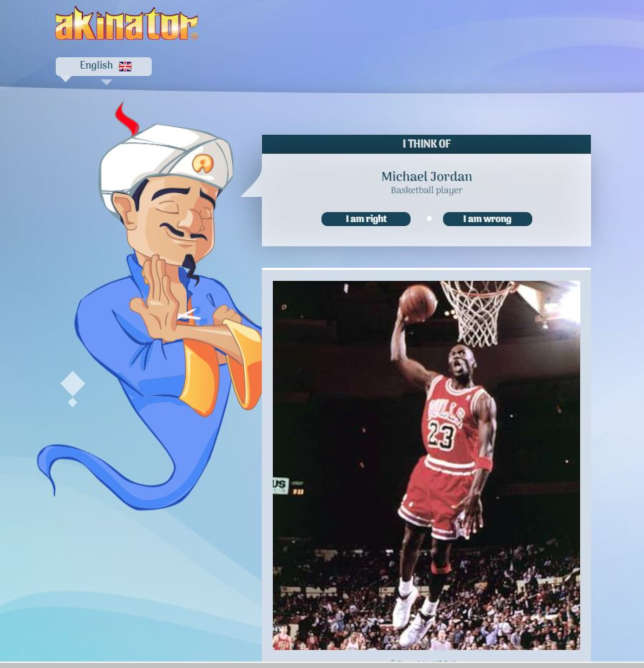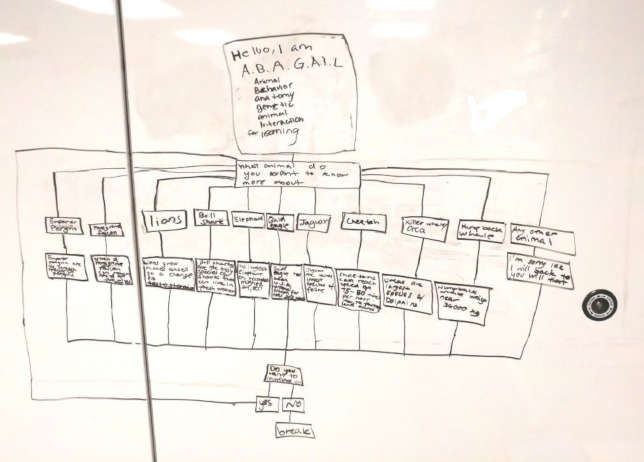Why It's Time to Transform Your Classroom with AI
As these teachers have come to understand, you don't have to be technically minded to introduce your students to the important concepts behind artificial intelligence.
- By Dian Schaffhauser
- 06/12/19
When computer science teacher Sharon Harrison wanted to introduce her eighth graders to the basic idea of artificial intelligence, she had them try out an online chatbot called Akinator, which asks the user questions to determine what historic or fictional character he or she is thinking of. In some instances, the students marveled at how quickly the program could figure out the answer. "Sometimes it would guess in three or four guesses, and we'd say, 'How on earth was it able to do that?'" she recalled.

From there, the discussion in this elective class at the University of Chicago Laboratory Schools examined how responses to the chatbot could be sabotaged — by responding to the questions incorrectly, and thereby "damage the integrity of the program."
At the same time, a similar set of activities and conversations were taking place in Fulton Academy of Science & Technology, a K-8 school in Roswell, GA. There, Mark Gerl had his sixth- and seventh-grade Python coding class students talk about playing games like Tic-Tac-Toe and Reversi against a computer and how AI "isn't really intelligent so much as it's a series of decision trees at a low level." They also discussed how programs like Apple Siri, Amazon Alexa and Google Assistant work as virtual assistants or chatbots using the same approach.
In both classrooms, the teachers eventually shifted the conversation around to having the students consider how to build their own chatbots.
Those projects grew out of Harrison and Gerl's participation in a professional learning course piloted by the International Society for Technology in Education (ISTE), to help teachers learn about artificial intelligence in K-12 education. Funded by General Motors, the 30-hour, self-paced, instructor-supported program, "Artificial Intelligence Explorations and Their Practical Use in Schools," is intended to "cultivate future AI programmers."
The course surfaced around the same time ISTE published its first book about AI in education, Teaching AI: Exploring New Frontiers for Learning, by Michelle Zimmerman, a teacher at Renton Prep Christian School. (The Washington school was selected last year as the first K-12 Microsoft Flagship School in the country.)
Why all the attention on AI right now? As the ISTE website explained, "AI should be a critical element of any STEM curriculum. After all, it's a technology that's already making its way to classrooms in the form of adaptive software, recommendation engines and digital assistants."
Gerl concurred. Learning about AI as an educator is just a matter of "being part of the discussion of the moment because it is going to change what our future technologies are like," he said. "A lot of the teachers say, 'Is the computer going to take my job?' Well, no, but you need to know why."
Consultants and Their Chatbots
Harrison's class was given a specific scenario: The eighth graders would act as consultants to a second-grade teacher who wanted to have chatbots that could introduce her students to local seasonal produce as part of a larger unit on nutrition. The second graders would visit the local farmers market before meeting with their eighth-grade advisors. (As with many things education-related, the effort didn't quite work out as planned. During one iteration of the activity, the timing didn't mesh for the second graders, who were in a different building on campus, to make their visit to the older students; in a second iteration the field trip to the market was canceled owing to bad weather.)
In the meantime, the "consultants" worked in groups of two to four to design a flowchart for their nutrition chatbot, researched local produce and did their coding, commenting and testing.

A big challenge for the students was to rein in their ambitions, said Harrison. "As soon as they started thinking about the information they'd have to store, all of a sudden, they realized, there's just so much, how could they [share it all]?" The solution to that took several forms: chatbots might gave very broad answers about general topics or they might focus on a specific fruit or vegetable and cover the topic more deeply.
Not only did the lessons on AI engage the students, she said, but the consulting aspects of the project did too. When one group of the younger kids did manage to get to the classroom, "the eighth graders really loved showing them their designs and what they were doing."
Getting to a Deeper Level of Learning
Gerl in Roswell took a more expansive approach. There, the only stipulations were to show him their flowcharts, algorithms and branching trees "before you write the first line of code."

The kids took off in numerous directions. "It turned out fantastic," he said, "because it was really their interest, their own curiosity that was driving their projects."
One student, a "huge history buff" took what she was learning about southeastern states in a social studies class and created a virtual assistant to ask specific questions about various states, such as population, capital, state bird, border states and who the governor was. "She figured out she could use the same questions for different states. All she had to do was make sure all of her answers lined up the same way every time," Gerl noted.
The same student, with some guidance from Gerl, researched the text-to-speech engine in Python and figured out how to give her creation a voice "and how to find the right pitch that sounded natural so that it wasn't too fast or too slow."
Another student who is open about his experiences with therapy worked with the school counselor to write a chatbot for students to find out "how they feel and whether they just need to talk about it or go see the counselor."
Other topics included jungle cats and weather. "They took homework for other classes and used my class as a way to do it at a higher, deeper, better level," said Gerl.
No Tech Needed
Gerl doesn't believe teachers need to have a highly technical background to take on the integration of AI into classroom lessons. A fellow ISTE student in nearby Atlanta, Frédérique McGirt, teaches French at Atlanta International School.
"Totally no coding background whatsoever," he explained. "But she was able to bring some ideas into her French class for elementary students, getting Dash and Dot robots to respond to commands in French."
As Gerl pointed out, "Even if it's not a tech class you're teaching, you can use these tools for just about anything."
As an example, a teacher could use Twine, an open source tool for telling interactive, nonlinear stories. Like Apple's long-ago HyperCard, Twine let's the user lay out decision-tree options on digital index cards that can link to one another. The student could demonstrate his or her understanding of Socrates' core philosophy by developing AI that impersonates the philosopher — "his tenets, his teaching style" — by creating a chatbot with decision trees and branching text.
Learning How Systemic the World Really Is
Inspired by the success she found with the ISTE-inspired work, next fall Harrison will be introducing two new semester-long courses, one on AI followed by another on machine learning, which would focus on development of the algorithms and various learning mechanisms. Both classes will be more advanced than what she's covered so far.
"It's a very relevant concept in the world," she said. "Both AI and machine learning are challenging, rigorous subjects, which a lot of our students really thrive on doing. So, I find that students will take these courses because they're really interested in them, not necessarily because it's [needed] for high school credit."
While Gerl doesn't have plans to add dedicated classes like Harrison, he does intend to continue introducing the basics of AI to his students because it helps them learn "how systemic our world really is." Whether it's traffic lights built on algorithms that vary the timing based on the amount of traffic or how staff scheduling works in a big restaurant operation, "a lot of what we do on a day-to-day basis really could be analyzed using these branching trees, these algorithms, these concepts — even if it's not programming — because you're looking at how the whole system works. The driving technology behind it has pushed it to the point now where it is accessible to non-technological people if they're willing to take that first step."
About the Author
Dian Schaffhauser is a former senior contributing editor for 1105 Media's education publications THE Journal, Campus Technology and Spaces4Learning.